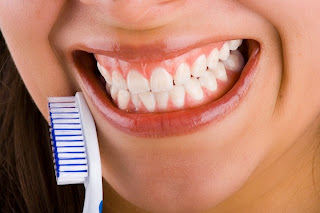Brushing your teeth is something you (hopefully!) do every day, twice a day, which means the habit can become so ingrained in our daily routine, that it can be easy to just go through the motions and get sloppy, which can lead to poor brushing habits. And you guessed it! That leads to cavities, gum disease, and a host of other oral health problems that Krengel Dental tries to protect you against.
Here are some common bad brushing habits and how you can
break them:
1.
Not brushing long enough. Most
people bush their teeth for only a minute, but experts say you need at least
two minutes to eliminate the entire bacterial film in your mouth. Nowadays many
electric toothbrushes are timed. To ensure you are getting to two minutes, time
yourself. You may need two cycles of the automatic setting.
2.
Only Paying Attention to One Side Right
-handed people tend to clean the right side of their teeth better and left
handers the left side. Make sure you are giving equal attention to both sides
no matter which hand you brush with. And don’t ignore the gum line because
that’s where the most tartar and plaque buildup.
3.
Using a side-to-side motion. A
side-to-side or sawing motion can actually hurt the enamel of your teeth.
Instead, use a circular motion.
4.
Being too aggressive. Be
gentle but energetic while brushing. Having a heavy hand can again damage the
enamel or irritate your gums.
5.
Using the wrong toothbrush. You should
use a toothbrush with soft bristles with a head that fits into your mouth and
can reach back to those hard-to-reach places. Having a toothbrush that is the
right size and with a comfortable handle will make you more likely to use your
toothbrush regularly and use it properly.
With these helpful tips, we know you’ll be better equipped
to tackle that plaque and protect your teeth! Visit West
Bloomington’s Kengel Dental if you
need a refresher on how to brush. We’re glad to give you a few pointers!

















